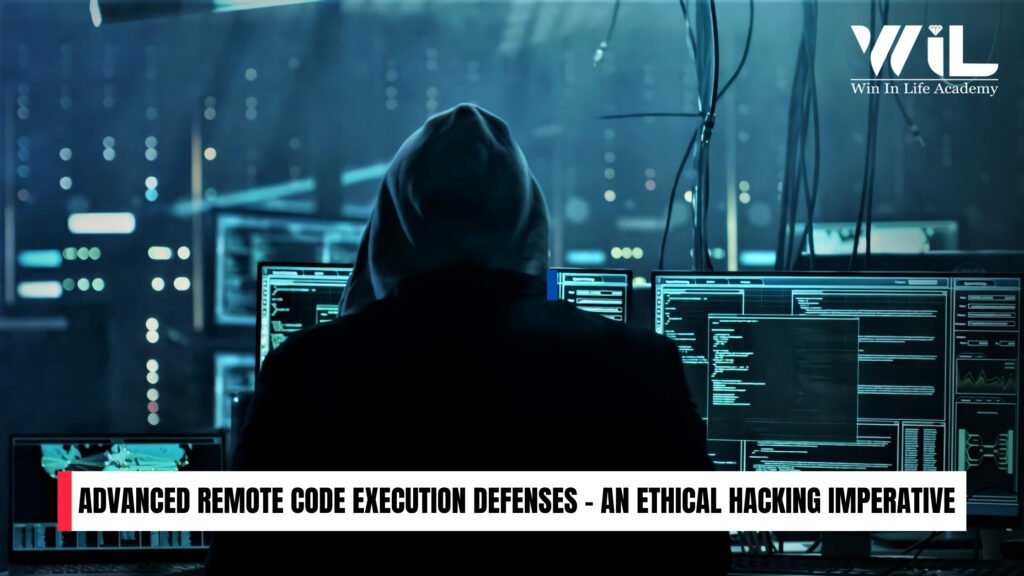The software development continues at its constant pace, bringing forth innovative applications that streamline operations and offer unprecedented insights. However, this acceleration unintentionally broadens the attack surface, presenting a persistent challenge: ensuring the robust security of increasingly complex systems. Among these powerful tools is D-Tale, a widely adopted data visualization library that empowers users with interactive data exploration and analysis capabilities. Yet, even sophisticated tools like D-Tale are not immune to critical security flaws, as recently underscored by the disclosure of CVE-2025-0655.
CVE-2025-0655 represents a particularly alarming remote code execution vulnerability. Its identification has sent ripples through the cybersecurity community, highlighting the profound risks inherent in seemingly gentle functionalities. This critical flaw in D-Tale permitted attackers to execute arbitrary system commands, a capability that grants them extensive control over the compromised host. The gravity of such a vulnerability necessitates a deep dive, not just into its technical mechanics, but also into the broader implications for cybersecurity posture.
This blog aims to dissect CVE-2025-0655, providing a comprehensive understanding of its origins, exploitation vectors, and potential consequences. More importantly, it will underscore the indispensable role of ethical hacking as a proactive and reactive discipline in mitigating such sophisticated threats. By understanding how attackers operate, we can build more resilient defenses, transforming potential weaknesses into fortified strongholds.
Enroll Now: Ethical Hacking course
An In-Depth Technical Explication of CVE-2025-0655

To truly grasp the significance of CVE-2025-0655, one must first appreciate the operational framework of D-Tale and then dissect the precise technical flaw that paved the way for this critical remote code execution vulnerability.
A. D-Tale’s Operational Framework and Feature Set
D-Tale is celebrated for its ability to transform raw data into interactive, visual narratives. Its core functionalities include the generation of descriptive statistics, intuitive filtering, sorting, and even custom transformations, all accessible via a user-friendly web interface that typically runs locally or within a controlled server environment. A key feature that empowers data scientists is the “custom filters” option.
This functionality is designed to allow users to apply arbitrary Python expressions or logic to filter their datasets, offering unparalleled flexibility in data manipulation. It’s this very flexibility, however, that became the Achilles’ heel in the context of CVE-2025-0655. D-Tale, being a Python-based application, processes these custom filters by executing Python code within its runtime environment, which is where the vulnerability chain begins.
B. The Modus Operandi of Exploitation: Unprotected Custom Filters and Exposed API Endpoints
The genesis of CVE-2025-0655 lies in the hazardous combination of unprotected custom filters and an exposed API endpoint.
The Unprotected Nature of Custom Filters: The fundamental flaw was the insufficient input validation and sanitization applied to user-defined custom filters. While intended to execute legitimate data filtering expressions, the mechanism failed to adequately distinguish between benign code and malicious payloads. This allowed attackers to inject arbitrary Python code snippets masquerading as valid filter expressions.
The D-Tale application, in its processing of these filters, would then unwittingly pass this malicious code to its underlying Python interpreter for execution, believing it to be a legitimate part of the data transformation logic. This is the very essence of a rce vulnerability – transforming data input into executable commands.
The Exposed API Endpoint as the Attack Vector: Compounding this flaw was the existence of an accessible, “exposed API endpoint.” This endpoint served as the direct entry point for attackers to deliver their malicious custom filter payloads. In many web applications, API endpoints are designed to facilitate communication between different software components or with client-side interfaces.
However, if these endpoints lack robust authentication, authorization, or are simply left exposed without sufficient access controls, they become prime targets. In the case of D-Tale, this exposed endpoint allowed an unauthenticated or improperly authenticated attacker to submit a crafted request containing the malicious filter, which the vulnerable backend would then process, culminating in code execution.
Conceptually, an attacker could craft a simple HTTP request, perhaps a POST request to the vulnerable API endpoint, containing a JSON payload that included a custom_filter parameter. Instead of a benign expression like df[‘column’] > 10, the attacker might embed something like __import__(‘os’). system(‘rm -rf /’) within the filter string. When D-Tale processed this “filter,” the Python os.system command would be executed on the host, leading to devastating consequences. This sequence epitomizes a classic rce attack.
C. Catastrophic Impact Assessment: The Repercussions of Arbitrary Code Execution
The ability to achieve arbitrary code execution on a target system represents the zenith of a cyber attacker’s objectives. The consequences of such a compromise stemming from CVE-2025-0655 are nothing short of catastrophic:
- System Compromise and Control: The most immediate and severe consequence is the attacker gaining complete control over the underlying system where D-Tale is running. This grants them the ability to perform virtually any action a legitimate user with D-Tale’s privileges could.
- Data Exfiltration: Given D-Tale’s role in data visualization, the compromised system likely handles sensitive datasets. An attacker can easily access, copy, and exfiltrate confidential information, intellectual property, customer data, or financial records.
- Persistence Mechanisms: Beyond immediate data theft, attackers will often establish persistence. This involves installing backdoors, creating new privileged user accounts, or deploying rootkits to ensure continued access even after the initial exploitation, making detection and eradication significantly harder.
- Lateral Movement: The compromised D-Tale host often serves as a foothold. Attackers can leverage this foothold to scan the internal network, identify other vulnerable systems, and pivot deeper into the organization’s infrastructure, escalating the rce attack into a full-scale network breach.
- Denial of Service (DoS): An attacker could intentionally disrupt D-Tale’s operations or the entire host system by deleting critical files, corrupting system configurations, or initiating resource-intensive processes, leading to service outages and operational paralysis.
- Reputational Damage and Financial Loss: Beyond the technical impact, a successful remote code execution vulnerability exploitation can inflict severe reputational damage, eroding customer trust, incurring regulatory fines (e.g., GDPR, HIPAA), and leading to significant financial losses from incident response, remediation, and lost business.
This scenario vividly illustrates why a remote code execution vulnerability is consistently ranked among the most critical security flaws, demanding immediate attention and robust preventative measures.
Strategies for Prevention, Detection, and Mitigation of RCE

Understanding a vulnerability like CVE-2025-0655 is the first step; the next, and arguably more crucial, is to develop and deploy effective countermeasures. Ethical hacking plays an indispensable role in this proactive defense, allowing organizations to identify, understand, and neutralize threats before they can be exploited maliciously.
A. Proactive Vulnerability Identification and Assessment
Ethical hackers approach the task of securing systems with an offensive mindset, thinking like opponents to uncover weaknesses.
- Threat Modeling: Before a single line of code is written or an application deployed, ethical hackers engage in threat modeling. This structured approach identifies potential threats, attack vectors, and vulnerabilities (including potential for remote code execution) within the application’s design and architecture. For D-Tale, this would involve considering how user inputs are handled, where external data is sourced, and what capabilities are exposed via APIs.
- Input Validation and Sanitization Methodologies: The cornerstone of preventing code execution vulnerabilities is rigorous input validation and sanitization. Ethical hackers advocate for a “whitelist” approach, where only explicitly allowed characters, formats, or values are accepted, rejecting everything else. This stands in contrast to “blacklisting,” which attempts to block known malicious patterns but can be bypassed by novel attack techniques. Techniques like regular expressions, context-aware escaping, and strict data typing are paramount.
- API Security Auditing: Exposed API endpoints are a common vector for rce vulnerability. Ethical hackers meticulously review API documentation and conduct automated and manual tests to assess authentication mechanisms (OAuth, API keys), authorization controls (ensuring users can only access resources they are permitted to), rate limiting to prevent brute-force attacks, and secure communication protocols (e.g., ensuring HTTPS is enforced with valid certificates).
- Code Review and Static Application Security Testing (SAST): For organizations with access to the source code (or D-Tale’s open-source components), manual and automated code reviews are vital. SAST tools scan the codebase for common rce vulnerability patterns, insecure function calls, and improper handling of external input that could lead to code execution.
- Dynamic Application Security Testing (DAST) and Penetration Testing: While SAST examines code statically, DAST tools and human penetration testers actively interact with the running application. They send crafted inputs, including those designed to trigger remote code execution, to identify vulnerabilities that manifest during runtime. A skilled ethical hacker would specifically target custom filter functionalities and API endpoints, attempting to inject malicious payloads.
- Fuzzing: This automated technique involves feeding a program a large volume of unexpected, malformed, or random inputs to discover bugs, crashes, or security vulnerabilities like code execution. Fuzzing the custom filter input parser in D-Tale could reveal how it handles abnormal data, potentially exposing a rce vulnerability.
B. Defensive Fortifications: Architecting for Resilience Against RCE
Beyond identification, robust security architecture is critical to defending against rce attack vectors.
- Principle of Least Privilege (PoLP): This fundamental security tenet dictates that D-Tale, or any application, should operate with the minimum necessary permissions to perform its intended functions. If the D-Tale process runs with limited user privileges instead of root or administrator access, even a successful remote code execution exploit would have restricted impact, preventing widespread system compromise.
- Containerization and Sandboxing: Deploying applications like D-Tale within isolated environments such as Docker containers or virtual machines significantly limits the “blast radius” of a successful exploit. If a rce attack occurs within the container, the attacker is confined to that isolated environment, preventing lateral movement to the host system or other containers. Sandboxing restricts the application’s ability to access system resources like files, network sockets, or other processes.
- Web Application Firewalls (WAFs): A WAF acts as a protective shield at the network edge, inspecting incoming HTTP/S traffic for malicious patterns. It can be configured to block known code execution attempts, SQL injection, cross-site scripting (XSS), and other web-based attacks before they reach the vulnerable application. While not a silver bullet, a WAF can provide an essential layer of defense against a rce attack.
- Runtime Application Self-Protection (RASP): RASP solutions are integrated directly into the application’s runtime environment. They monitor the application’s behavior and input/output in real-time, detecting and often preventing exploitation attempts, including those targeting remote code execution, even if the vulnerability is unknown (zero-day).
- Security by Design: The most effective defense against rce vulnerability is to embed security considerations throughout the entire Software Development Lifecycle (SDLC). This means security is a primary concern from the initial design and architecture phases, through coding, testing, and deployment, rather than an afterthought. Developers must be trained in secure coding practices, understanding how to prevent code execution flaws from the ground up.
C. Incident Response and Post-Exploitation Forensics
Even with the best preventative measures, a remote code execution incident can still occur. A well-defined incident response plan is paramount.
- Early Detection: Implementing robust monitoring solutions, including intrusion detection systems (IDS), security information and event management (SIEM) systems, and detailed application logging, is crucial. These tools can detect anomalous behavior, suspicious network traffic, or unusual system calls that might indicate a rce attack in progress.
- Containment and Eradication: Upon detection, rapid action is required. This involves isolating compromised systems from the network, disabling affected services, and patching the identified rce vulnerability. The goal is to stop bleeding and prevent further compromise.
- Forensic Analysis: Once contained, a thorough forensic investigation is conducted to determine the root cause, the extent of the compromise (what data was accessed or exfiltrated), the methods used by the attacker, and potentially, attribution. This analysis is vital for preventing future similar attacks.
- Recovery and Lessons Learned: The final phase involves restoring services from clean backups, implementing reinforced security controls, and conducting a post-mortem analysis. Lessons learned from the rce attack are documented and used to improve security policies, procedures, and development practices.
Cultivating Cybersecurity Expertise: The Imperative for Structured Training

The sophistication of threats like CVE-2025-0655 underscores a widening cybersecurity skills gap. Organizations desperately need professionals who are not only aware of vulnerabilities but possess the practical skills to identify, analyze, and neutralize them.
A. Bridging the Skills Gap
The demand for cybersecurity talent far outruns the supply. As more applications are developed and deployed, and as attack techniques become more advanced, the need for skilled practitioners capable of addressing threats like remote code execution becomes ever more urgent.
B. The Value Proposition of Formal Ethical Hacking Education
A structured ethical hacking course offers a unique and invaluable opportunity to bridge this gap. Such programs go beyond theoretical knowledge, providing:
- Comprehensive Understanding of Vulnerability Types: Students gain a deep understanding of various attack types, including but not limited to rce vulnerability, SQL injection, XSS, authentication bypasses, and more.
- Hands-on Experience: Practical labs and real-world scenarios allow students to wield the same tools and methodologies used by both malicious attackers and professional ethical hackers. This hands-on experience is critical for internalizing concepts like identifying code execution flaws.
- Penetration Testing and Vulnerability Assessments: Training covers the methodologies for conducting full-spectrum penetration tests and vulnerability assessments, equipping individuals to systematically discover weaknesses in applications and infrastructure.
- Secure Coding and Architecture: Beyond identifying flaws, ethical hacking courses often delve into secure coding practices and architectural principles, teaching aspiring security professionals how to prevent vulnerabilities from being introduced in the first place, thereby stopping a rce attack at its source.
- Critical Thinking and Problem Solving: Cybersecurity is a dynamic field requiring constant adaptation. Ethical hacking training fosters critical thinking and problem-solving skills essential for analyzing novel threats and developing innovative defense strategies.
C. Beyond Technical Skills: The Ethical Dimension
Crucially, reputable ethical hacking education emphasizes the ethical and legal frameworks governing cybersecurity. It instills a strong sense of responsibility, ensuring that powerful hacking techniques are always applied for defensive purposes, contributing to a safer digital world.
Final Thoughts
The gravity of CVE-2025-0655 serves as a potent reminder of the ever-present threat of remote code execution and the relentless ingenuity of malicious actors. It vividly illustrates how a seemingly isolated vulnerability in a data visualization tool can escalate into a devastating compromise, impacting data integrity, system availability, and organizational reputation. If software is developed, vulnerabilities will emerge, making continuous learning, proactive defense, and rapid adaptation critical.
Robust security is not merely about deploying the latest tools or adhering to compliance checklists; it is fundamentally about cultivating a highly skilled workforce – professionals who not only understand the intricacies of sophisticated attack vectors like rce attack but are also capable of anticipating them, identifying them, and implementing robust countermeasures. These are the individuals who comprehend the intricate dance between offense and defense, turning theoretical knowledge into practical, actionable security.
Are you ready to arm yourself with the knowledge and skills to combat sophisticated cyber threats like remote code execution? Understanding vulnerabilities like CVE-2025-0655 is just the beginning.
At Win in Life Academy, our comprehensive ethical hacking course is meticulously designed to transform aspiring security professionals into proactive defenders. Learn to identify, exploit (ethically!), and mitigate critical weaknesses, becoming an invaluable asset in today’s digital world. Don’t just observe the threats – learn to counter them. Visit Win in Life Academy today and take the definitive step towards mastering the art of ethical hacking and securing your future in cybersecurity!
References
CVE-2025-0655 – Remote Code Execution in D-Tale via Unprotected Custom Filters
CVE-2025-0655
https://cve.mitre.org/cgi-bin/cvename.cgi?name=2025-0655
CVE-2025-0655 Detail
https://nvd.nist.gov/vuln/detail/CVE-2025-0655
CVE-2025-0655: Python vulnerability analysis and mitigation





